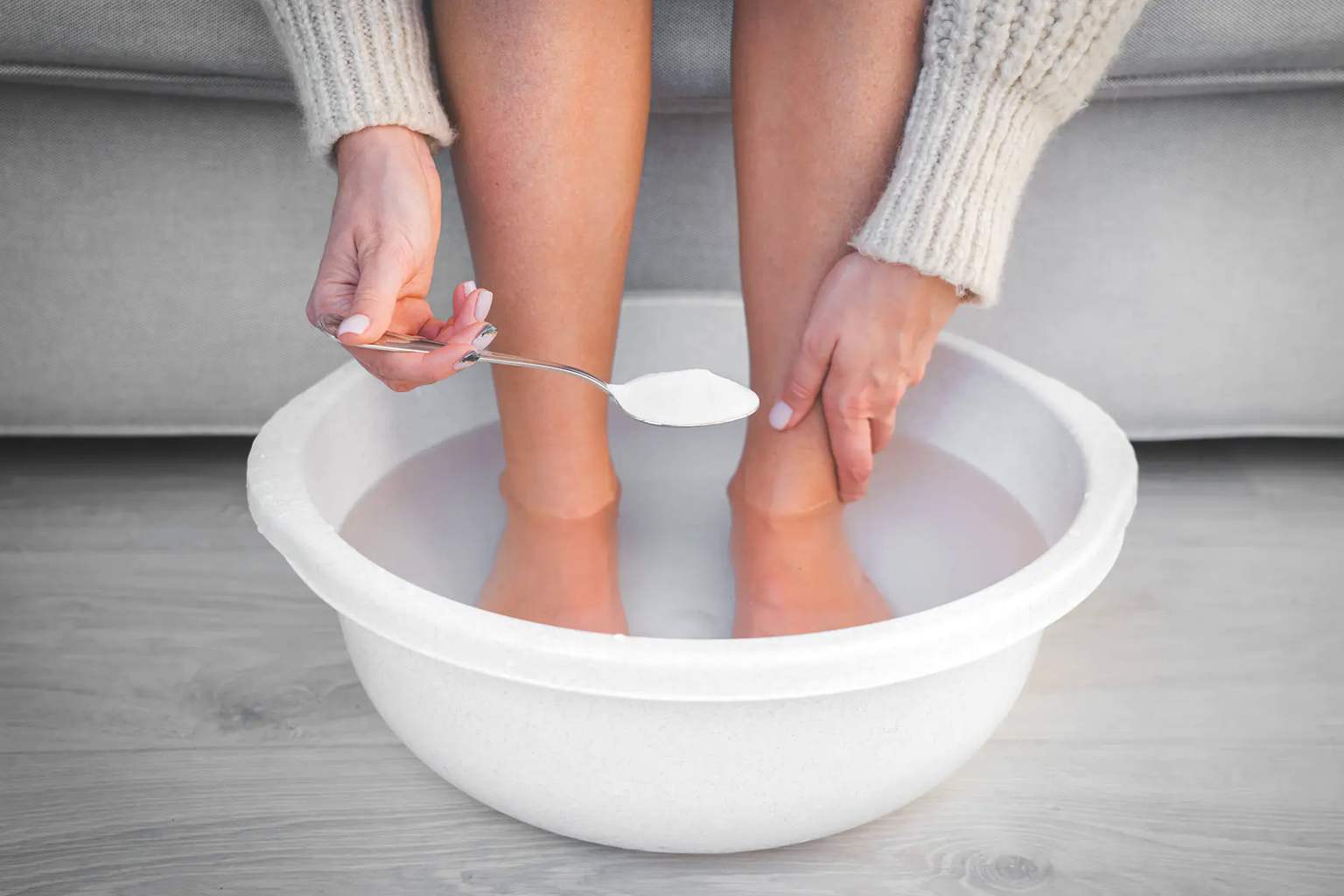Have you ever felt your feet crying out for relief after a long day? Imagine transforming them in just 15 minutes with a homemade soak that uses common kitchen ingredients. A warm water bath infused with bicarbonate and salt is not only refreshing but also deeply nourishing for tired, swollen feet.
This easy-to-make foot soak is celebrated by many podiatrists because it brings real, visible benefits to circulation, skin softness, and overall comfort. Let’s explore why this ritual has gained popularity and how you can try it at home.
Why a bicarbonate and salt soak is great for tired feet
The magic behind this soak lies in the complementary properties of its two main ingredients. Bicarbonate acts as a gentle exfoliant, helping remove dead skin cells while balancing the skin’s pH. This balance significantly reduces the growth of bacteria responsible for unpleasant odors. It’s like giving your feet a freshness reboot.
Salt—especially sea salt or Epsom salt—is packed with minerals like magnesium and potassium. These minerals soothe inflammation, hydrate the skin, and stimulate blood flow, which in turn helps reduce swelling and the sensation of heavy feet after hours spent standing or walking.
The combination of bicarbonate and salt does more than just refresh your feet. It improves local circulation, soothes aches, softens calluses, and helps keep fungal infections like athlete’s foot at bay.
How to create your own rejuvenating foot soak at home
Making your own foot bath is surprisingly simple and affordable. First, fill a basin with warm water—enough to cover your ankles comfortably. Then add two to three tablespoons of bicarbonate and about two tablespoons of coarse salt like sea salt or Epsom salt. Stir until everything has dissolved.
Now, immerse your feet for 15 to 20 minutes. This time allows the minerals and baking soda to penetrate deeply and work their magic. Make sure to dry your feet thoroughly afterward, especially between the toes, to prevent any trapped moisture. For extra care, follow up with a rich moisturizer to lock in the benefits.
If you want to amplify this simple treatment, gently rub rough areas with a pumice stone or soft brush after soaking to remove softened dead skin. Adding a few drops of essential oil—like lavender or tea tree—can boost the relaxing and antifungal properties.
Tips and tricks for maximizing foot soak benefits
For those with chronically swollen feet, alternating warm and cool foot baths or elevating feet afterwards can enhance lymphatic drainage and increase comfort. Massaging the feet with oils such as arnica or rosemary after soaking can also improve circulation and relieve soreness.
It’s recommended to indulge in this foot soak one to two times a week as part of your self-care routine. People with sensitive skin, diabetes, or circulatory issues should check with a healthcare provider before trying this at home.
From personal experience, I find that on days when my feet feel particularly heavy, this ritual not only eases the discomfort but also gives a mental refresh—something like hitting a reset button at the end of a hectic day. The subtle warmth combined with the cleansing action truly elevates the simple act of foot care into a relaxing ritual.
What about you? Have you tried natural remedies for tired feet, or is this your first time hearing about a bicarbonate and salt soak? Share your thoughts or experiences below—your story might inspire someone else to take a moment for their own feet.
This timeless, natural foot treatment is not a quick fix for internal detox but a proven way to brighten the appearance and comfort of your feet. Simple, inexpensive, and effective, it’s a wellness habit worth adopting for anyone seeking relief and freshness at the end of the day.

Do you add the essential oils to the foot soak, or directly to the feet after drying the feet AFTER the soak? The directions were not clear.